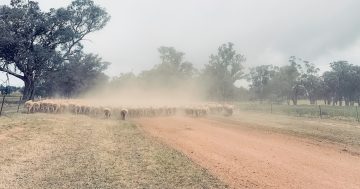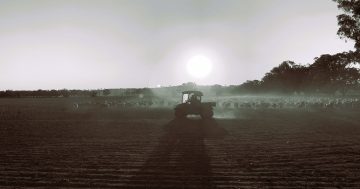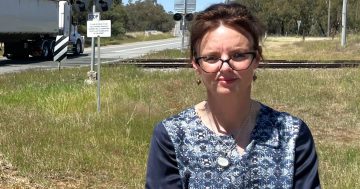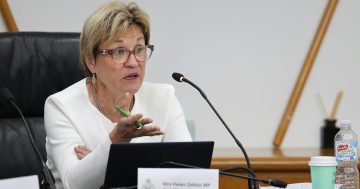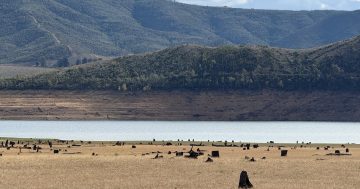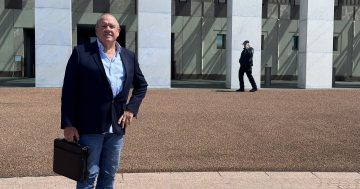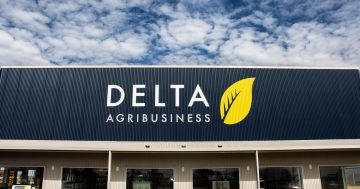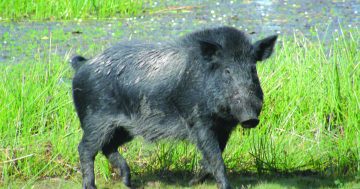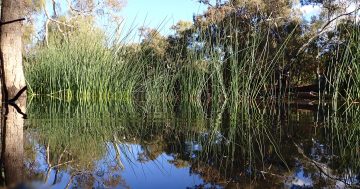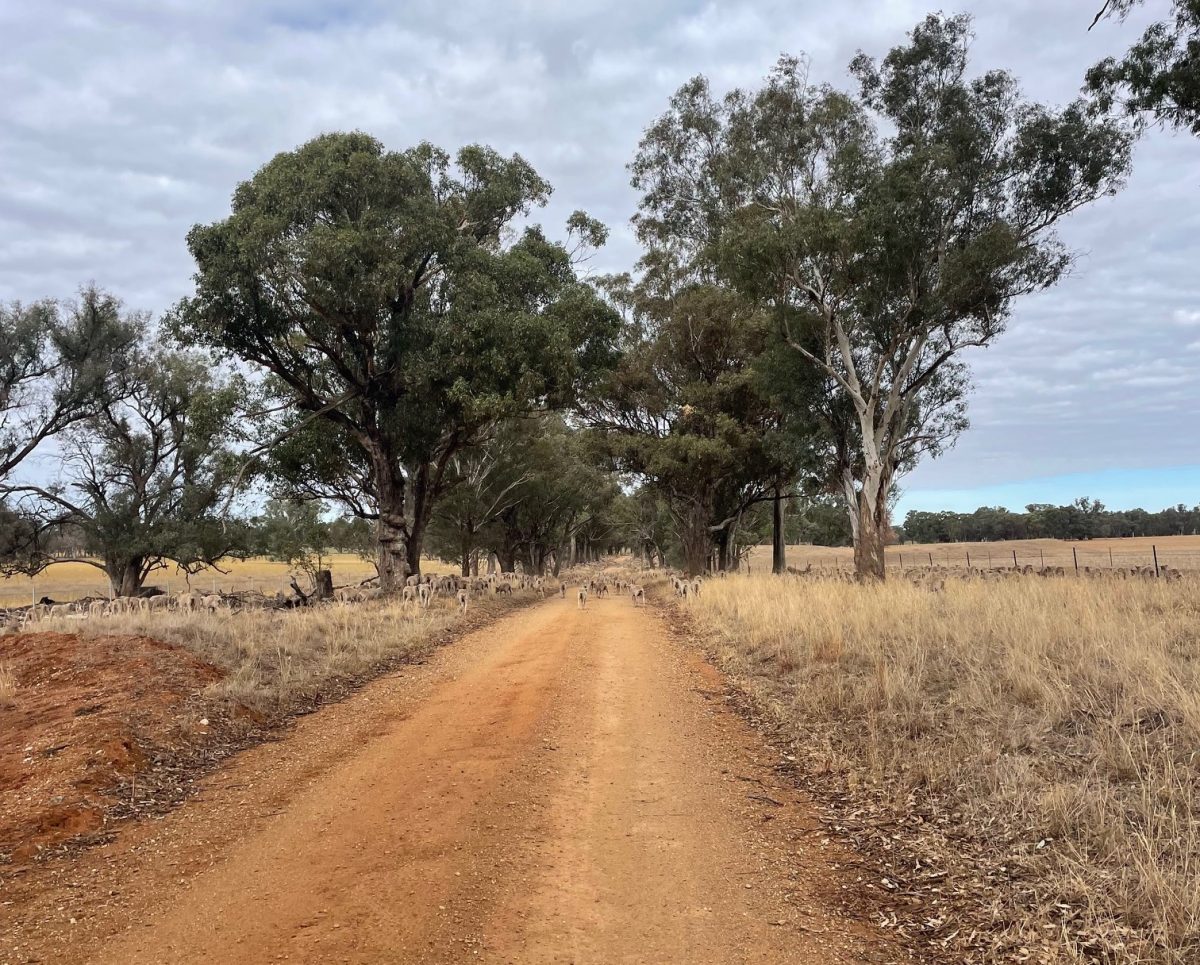
Farmers have been forced to put their stock on the roads to keep the feed up to them as dry conditions persist across the Riverina and Murray regions. Photo: Edwina Mason.
The Murray and Riverina regions in southern NSW are currently the hardest hit by drought in the state, according to the latest data from the NSW Department of Primary Industries.
In the Riverina, according to the NSW Combined Drought Indicator, 80.8 per cent of the region – which extends from Boorowa and Young in the east to Hay in the west – is classified as drought-affected.
But for farmers in the southern reaches the situation has been dire for some time.
In Cootamundra-Gundagai, 81.7 per cent of the shire is drought-affected, with 18.3 per cent — particularly around Jugiong, Muttama and Coolac — officially in drought since August 2024.
Even further south, 90 per cent of the Snowy Valleys, which straddles the Riverina and Murray Local Land Services (LLS) regions, is drought-affected, with 8.5 per cent – with country east of Tumbarumba and south of the Talbingo Reserve – now formally in drought.
Mandatory Level 2 water restrictions have been in place in Gundagai since April, while the Snowy Valleys region moved to Level 1 restrictions in May.
According to the NSW Department of Primary Industries and Regional Development (DPIRD), rainfall in late May and follow-up showers in June and early July offered welcome relief in some areas, particularly in the northeastern Riverina and around the cropping zone near Wagga Wagga.
Some mixed farming and crop producers remain hopeful the rainfall will be enough to support germination and early crop establishment but generally crops remain patchy.
Farmers in the south say the recent rain offered little more than false hope, as cold temperatures and repeated frosts have halted pasture and crop growth and feed remains in short supply.
DPIRD’s own analysis supports this assessment. Its Plant Growth Index — a key drought indicator — remains critically low across much of the south.
Forecasts suggest drought conditions are likely to extend further into central and western NSW by the end of August.
Third-generation Downside farmer David Meiklejohn said what was once considered reliable farming country was now hanging by a thread.
“Now we’re probably one rain away from drought every year. We’re just running on nerves,” he said.
He said this year’s autumn break was “exceptionally late”, forcing many farmers to take risks and sow dry.
“The crops should be knee-high by now. Ours are two inches tall. The germination is patchy, and no one knows if we’ll get a finish,” he said.
He’s streamlined operations to just oats and barley – crops that can be fed off, baled or harvested depending on what the season does – and taken on long-haul hay carting just to stay afloat.
“We’ve had to get creative. But we’re still behind,” he said.
Until recently, he was hand-feeding sheep every two days.
“They’ve been doing it tough. Lambing percentages are down,” David said. “We’ve been lucky in some ways, but that’s only because we stripped right back early.”
He also said government drought support was still falling short, describing the Farm Household Allowance as difficult to access due to a burdensome application process he found degrading.
“There’s no freight help, no automatic rate relief – the drought assistance is ridiculous. The paperwork alone puts people off. You shouldn’t have to prove you’re struggling when every DPI map shows we are,” he said.
He wants council rates covered during drought declarations – pointing out he pays $7000 a year – similar to how LLS rates were waived in 2017–18.
In the Snowy Valleys, Greg Greg farmer Sarah Whiteley said two years of relentless drought had pushed many in the Murray region to breaking point, forcing tough decisions and exposing deep cracks in government support.
“In the Upper Murray, I’ve watched every friend, neighbour and fellow farmer endure the daily strain of uncertainty,” she said. “We are all, quite literally, white-knuckling our way through this, clinging to hope for relief while doing everything in our power to hold on.
“This is not just a dry spell. It is a profound test of resilience, and for many, a tipping point,” she said.
Sarah’s own family had been forced to sell more than 450 breeding cattle – the result of 15 years of genetics and hard work – a loss she said went beyond finances and cut to the core of their identity.
She criticised the limited government support, pointing to a single Rural Assistance Authority funding stream with terms she said were neither low-interest nor fit for long-term recovery.
“With no freight subsidies and minimal real assistance, the long-term fallout of this drought could cripple operations like ours for years,” she said.
Sarah warned that the challenge was no longer just seasonal, but structural — with rising costs, volatile markets, and inadequate policy settings pushing family farms out and opening the door to corporate consolidation.
“This isn’t just about farmers,” she said. “If we lose control over who grows our food and how, we risk losing transparency, integrity, and food security itself.”
NSW Farmers president Xavier Martin has called for extended funding for the Farm Business Resilience Program, the Rural Financial Counselling Service and mental health initiatives like the Farmgate program.
He is also pushing for continued federal support through the Regional Investment Corporation beyond 2026 and improvements to the national drought hubs.
He stressed that practical, long-term support was essential not only for business survival, but for the mental wellbeing of farmers facing growing uncertainty.
“In a time when we’ve never needed Aussie food more, our governments must not turn their back on the bush – instead, they must turn up,” he said.
Original Article published by Edwina Mason on About Regional.







